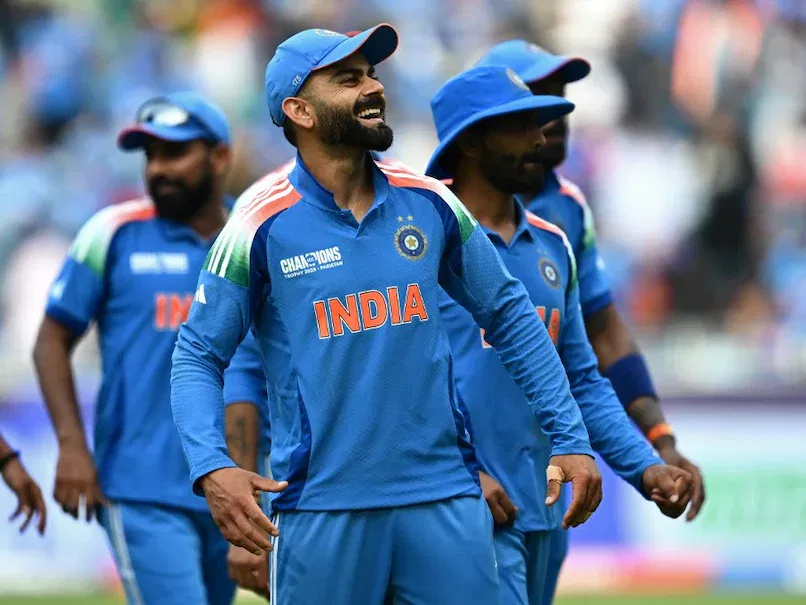Every year, cricket fans eagerly await the announcement of the BCCI central contract list – a prestigious recognition that not only provides financial security to players but also indicates their standing in Indian cricket. As the 2024-25 contract review approaches, several established names find themselves in a precarious position, with their spots on the coveted list under threat.
Table of Contents
Understanding the BCCI Central Contract System

The BCCI contracts are structured into four distinct grades, each offering different levels of financial compensation. This tiered system reflects a player’s importance to Indian cricket across formats and their consistent performance at the international level.
| Grade | Annual Retainer Fee (INR) |
|---|---|
| A+ | 7 crore |
| A | 5 crore |
| B | 3 crore |
| C | 1 crore |
Beyond the financial benefits, the BCCI central contract system serves as an official acknowledgment of a player’s value to Indian cricket. It provides security and allows cricketers to focus on their game without worrying about financial instability.
The BCCI Contract Criteria: Numbers That Matter
Not everyone who wears the India cap qualifies for a central contract. The BCCI contract criteria are quite specific – players need to participate in a minimum number of matches across formats within a calendar year:
- At least 3 Test matches, or
- 8 ODIs, or
- 10 T20Is
These requirements ensure that only regularly contributing members receive the benefits of the BCCI player contracts. This is where several players find themselves vulnerable ahead of the next contract cycle.
Players Who Could Be Dropped from BCCI Contract Lists
KS Bharat: The Waiting Game
KS Bharat, currently in Grade C of the BCCI contract categories, faces an uncertain future despite being India’s preferred Test wicketkeeper in Rishabh Pant’s absence. His limited appearances and modest performances haven’t strengthened his case.
“I’ve been working hard on my game, focusing on both my keeping and batting skills,” Bharat had mentioned after a recent Ranji Trophy match. But with Pant’s return and Dhruv Jurel’s impressive debut, Bharat’s position in the BCCI contract system looks increasingly tenuous.
Ruturaj Gaikwad: Format Specialist’s Dilemma
Despite his IPL heroics and T20I appearances, Ruturaj Gaikwad hasn’t featured regularly across formats. The BCCI player contracts favor all-format players, and Gaikwad’s limited international exposure puts him at risk of losing his Grade C contract.
Cricket analyst Aakash Chopra recently noted, “Gaikwad is tremendously talented, but the competition for opening slots is fierce. He needs more opportunities across formats to cement his place in the contract list.”
R Ashwin: The Retirement Factor

R Ashwin, one of India’s greatest spin bowlers, currently holds a Grade A contract. However, his recent retirement from international cricket automatically excludes him from the BCCI contracts for the upcoming cycle. While his Test career continues to flourish, his limited white-ball appearances for India had already affected his contract standing.
Mukesh Kumar: The New Entrant’s Challenge
Fast bowler Mukesh Kumar earned his Grade C contract after impressive domestic performances, but limited appearances in the national team put his contract renewal at risk. The BCCI contract criteria demand consistent participation, and Mukesh’s sporadic appearances might not be enough to retain his spot.
Breaking Down BCCI Contract Categories and Their Implications
The implications of being dropped from the BCCI central contract list extend beyond financial loss. For young players like Gaikwad and Mukesh, it could signal a need to prove themselves further at the domestic level. For veterans, it might indicate the beginning of the end of their international careers.
“The BCCI contract system is designed to reward consistent performers and those who feature regularly for India,” explains former selector Devang Gandhi. “It’s a reflection of a player’s current value to Indian cricket, not necessarily their talent or potential.”
Players dropped from BCCI contract lists often face a challenging road back. They must deliver exceptional performances in domestic cricket and capitalize on any international opportunities that come their way.
The Bigger Picture: Evolution of the BCCI Central Contract
The BCCI central contract has evolved significantly since its introduction. What began as a simple retainership has transformed into a comprehensive system that considers format specialization, leadership roles, and consistent performance.
The annual review process ensures that the contract list remains dynamic, reflecting current form rather than past glory. This approach has helped India build a strong bench strength, with players constantly pushing each other for spots not just in the playing XI but also in the contract list.
What’s Next for These Players?

For players on the edge of the BCCI contracts list, the coming months will be crucial. Domestic tournaments like the Ranji Trophy and the IPL will serve as platforms to make strong cases for retention or inclusion.
The BCCI selection committee will closely monitor performances across formats before finalizing the next contract cycle. For fans, the announcement will provide insights into the board’s vision for Indian cricket’s future and which players figure prominently in those plans.
As the cricketing calendar progresses toward the next contract cycle, these players know that every innings, every spell, and every match could determine whether they remain part of the prestigious BCCI central contract list or find themselves on the outside looking in.
FAQ:-
Who are the A+ cricketers in India?
As of the 2023-24 season, the A+ category cricketers in India’s central contracts are Rohit Sharma, Virat Kohli, Jasprit Bumrah, and Ravindra Jadeja.
Who lost the BCCI contract?
Ishan Kishan: Kishan reportedly lost his BCCI contract for not giving priority to domestic tournaments and has been out of India contention since November 2023.








